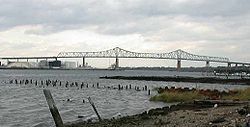
Here we present a simple solution to see that a fad is the result of the same type of behavior that causes any other good to be purchased. It is the characteristic of the good, and the interaction of the various agents with their neighbors that causes the peculiar pattern of behavior that is called fad.
Is Reaganism such a good and as a commodity is its commodity fetishism available for analysis beyond its intangible assets. Yet Reaganism is tangible and attempts to memorialize the commodity extend materially far beyond the cinematic and the televisual nature of the Great Communicator. The fad of VooDoo(sic) Economics is a useful example of how to discuss intangible assets as forms of virtual capital. The production and reproduction of the Reaganist myth is its own market. Its production of character/reputation and trust/reciprocity is of course legendary and its diffusion to the North American form of teabaggery continues with the institutional support of right-wing venture capital like the Kochs.
In the United States, commentators frequently equate supply-side economics with Reaganomics. The fiscal policies of Ronald Reagan were largely based on supply-side economics. During Reagan’s 1980 presidential campaign, the key economic concern was double digit inflation, which Reagan described as “Too many dollars chasing too few goods”, but rather than the usual dose of tight money, recession and layoffs, with their consequent loss of production and wealth, he promised a gradual and painless way to fight inflation by “producing our way out of it”.
An example of fad economics occurred in 1980, when a small group of economists advised Presidential candidate, Ronald Reagan, that an across-the-board cut in income tax rates would raise tax revenue. They argued that if people could keep a higher fraction of their income, people would work harder to earn more income. Even though tax rates would be lower, income would rise by so much, they claimed, that tax revenues would rise. Almost all professional economists, including most of those who supported Reagan’s proposal to cut taxes, viewed this outcome as far too optimistic. Lower tax rates might encourage people to work harder and this extra effort would offset the direct effects of lower tax rates to some extent, but there was no credible evidence that work effort would rise by enough to cause tax revenues to rise in the face of lower tax rates. … People on fad diets put their health at risk but rarely achieve the permanent weight loss they desire. Similarly, when politicians rely on the advice of charlatans and cranks, they rarely get the desirable results they anticipate. After Reagan’s election, Congress passed the cut in tax rates that Reagan advocated, but the tax cut did not cause tax revenues to rise.

As against this, the commodity-form, and the value-relation of the products of labour within which it appears, have absolutely no connection with the physical nature of the commodity and the material relations arising out of this. It is nothing but the definite social relation between men themselves which assumes here, for them, the fantastic form of a relation between things. In order, therefore, to find an analogy we must take flight into the misty realm of religion. There the products of the human brain appear as autonomous figures endowed with a life of their own, which enter into relations both with each other and with the human race. So it is in the world of commodities with the products of men’s hands. I call this the fetishism which attaches itself to the products of labour as soon as they are produced as commodities, and is therefore inseparable from the production of commodities.
– Karl Marx, Capital, Volume I

As one can perhaps see, the transgressive role of the State in the struggle among classes will become the key problem for making this critique work as will the impending institutional arrangements making that State ubiquitous and global.
“”In this present crisis, government is not the solution to our problem; government is the problem.
-Ronald ReaganReaganism was a political perspective in the United States based on a friendly-seeming, grandfatherly-type ex-actor telling us that government could do no good, and then proceeding to become the head of the executive branch of the United States government, drastically expanding the public debt as he saw fit. Why anyone believed it is beyond us.
Prominent lies promoted by Mr. Reagan include:
The “free market” is always more efficient than the government at providing solutions to problems. (See universal health care)
The “government” is incapable of solving a country’s problems (See Hurricane Katrina)
Some woman somewhere on welfare had a Cadillac and a color TV. (He made this up).Hardworking blue collar Americans should hate suffering poor Americans for eating their tax dollars instead of working their asses off for giant corporations themselves. (See trade union)
The “rich” are a beleaguered and overtaxed suffering demographic. (Who pay well for political campaigns!)
In Britain, there was a very similar political movement referred to as “Thatcherism,” named for the Iron Lady who advocated the same principles. The impact of this was slightly less than that of the States.

In Marxist philosophy, however, the term Cultural Hegemony describes the domination of a culturally diverse society by the ruling class, who manipulate the culture of the society – the beliefs, explanations, perceptions, values, and mores – so that their ruling-class worldview becomes the worldview that is imposed and accepted as the cultural norm; as the universally valid dominant ideology that justifies the social, political, and economic status quo as natural, inevitable, perpetual and beneficial for everyone, rather than as artificial social constructs that benefit only the ruling class
We live in a Tea (Party) service economy
The embodiment of those social constructs in the past decade are our pseudo-revolutionary objects of derision and humor, the teabaggers (aka Tea Party patriots and its libertarian factions). Cultural work has been often times difficult for many since its socially embodied labor derives from a multitude of divisions as well as a variety of controversies often dialectically dichotomous and intellectually challenging: for example cultural studies versus political economy approaches to critical theory. This is too small a space to solve the problem (it can be solved) but to point to some rudimentary examples like the personality Cult of Reagan to show the need for ecumenical approaches to critical analysis.
Come below the fold to see if we can’t disentangle the whole mess:
OCTOBER 27, 1980 More than two dozen papers drop Trudeau’s comic strip Doonesbury “The Mysterious World of Reagan’s Brain,” a week-long sequence that runs on the eve of the 1980 election. One of those papers, The Indianapolis Star, receives 850 calls of protest before it agrees to reinstate the strip.





Recent Comments